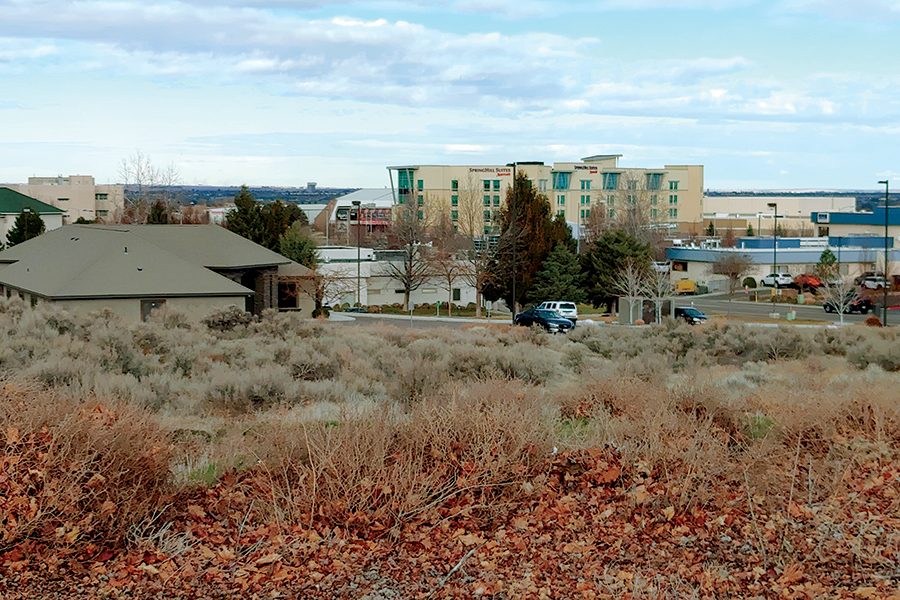
Home » Union Gospel Mission plans to move women’s shelter to Kennewick
Union Gospel Mission plans to move women’s shelter to Kennewick

February 14, 2022
The Tri-Cities Union Gospel Mission is preparing to move its shelter serving women and children to new quarters in central Kennewick in about three years.
The Christian ministry will build a 20,000-square-foot shelter just west of Vista Field to replace the current one at 110 N. Second Ave. in east Pasco.
Andrew Porter, executive director, said the
$6 million project will have many of the same features as the mission’s shelter for men on South Fourth Avenue in Pasco – classrooms, a chapel and better amenities for residents who live there while participating in its recovery program.
The mission paid $900,000 for the future home of the women’s shelter, a 3.5 acre site at 533 N. Young St., in 2021.
Its neighbors include the Three Rivers Convention Center to the north, a Trios Urgent Care Clinic and the Tri-Cities Cancer Center to the south and the Port of Kennewick’s Vista Field redevelopment project to the east.
Several hotels and retirement homes are nearby, as is a never-opened 16-bed behavioral health hospital.
Porter said the Tri-Cities Union Gospel Mission has long wanted to expand beyond its base in east Pasco, where it operated neighboring shelters for men, and women and children in buildings that both are more than a century old.
The ministry serves the homeless and people with mental health and substance issues. It has an annual budget of about $6 million and provides housing, support and recovery services to the homeless and struggling in Southeastern Washington.
It estimates it serves 3,000 people a year, provides more than 41,000 nights of shelter and serves more than 100,000 hot meals.
The Kennewick site is an ideal place to serve women and their children, Porter said. Demand is rising and women and children are one of the region’s fastest-growing homeless populations.
The location also reflects the mission’s desire to reflect its name. It is the “Tri-Cities” Mission, not the “Pasco” one, he noted. It also moves women and children out of a neighborhood with a troubled history.
The North Young Street address is easily accessible to public transportation and state social services.
The area is part of Kennewick’s Columbia Center commercial district, filled with retail and food service businesses. They are rich targets for the women who need jobs as they work to get into stable housing and employment.
The property is zoned for group living. Porter said women from Kennewick make up the largest share of people turning to the shelter for a place to stay in a crisis. That’s probably because Kennewick is the largest of the Tri-Cities, he said.
The current women’s shelter was built in 1914. It has 30 beds in seven compact rooms with dressers and closets. They offer families a safe refuge, but little room to spread out. There is a small day room and a play area in the basement.
It isn’t the sort of place women with children stay long enough to go through treatment for addiction, he said. It is a short-term solution for people in crisis, but ill-suited to those wanting to take advantage of the mission’s recovery programs.
The new facility will serve more than 70 people, including single women and women with children.
“We really do need a bigger, better place, a place where we can work with women and children,” he said.
Though it wanted to replace the shelter, the Union Gospel Mission built a new men’s shelter first because the need was more urgent.
The old men’s shelter was built in 1917 as a Masonic Temple and converted into a shelter in 1958. It was regularly full, Porter said, with 50 to 60 men sleeping on the floor most nights.
That didn’t happen at the women’s facility, which is usually full with 25 to 30 people.
The 40,000-square-foot men’s shelter opened Oct. 1, 2018.
Construction, land and soft costs pushed the cost to $11.4 million. Local donations covered about 75%, with grants making up the balance.
Porter said upgrading to the new building is making a difference in the lives of the men, many of them struggling with addiction and needing help to get back on their feet. Men are staying, getting sober and getting jobs in greater numbers, he said.
But it will take time to repeat that for women. The new building is likely at least three years away, with fundraising, planning, engineering and other work still to take place.
Porter said the mission received several unsolicited contributions to start the project, including a $100,000 gift in December. It welcomes contributions but won’t initiate a public capital campaign until it has spoken with its major donors about lead gifts.
It won’t commission an architect until about a quarter of the money has been raised. Porter called $6 million a ballpark figure based on an estimated cost of $300 per square foot. The numbers can change.
Unexpected costs were one of the prime lessons it learned while building the shelter for men.
“It all worked out, but whatever you think (the cost) is, you probably just need to raise a little more money. Things come up,” Porter said.
The mission receives no public funds. Community contributions support both the capital and operations costs.
Real Estate & Construction Local News
KEYWORDS february 2022





